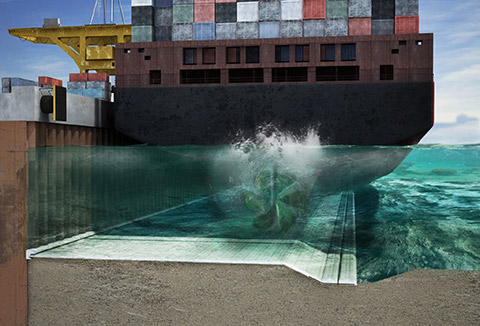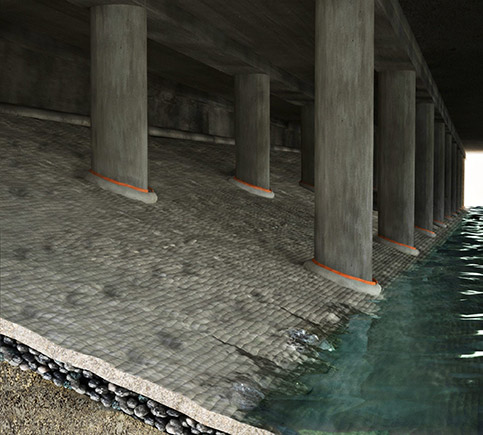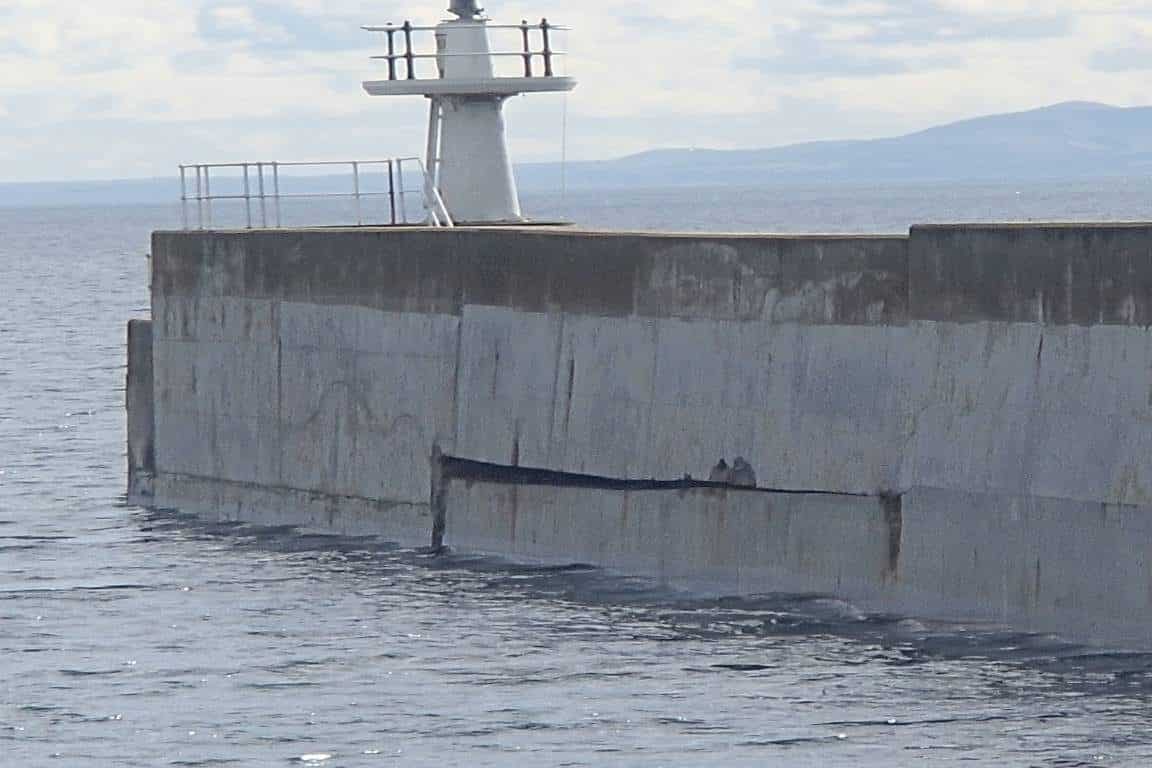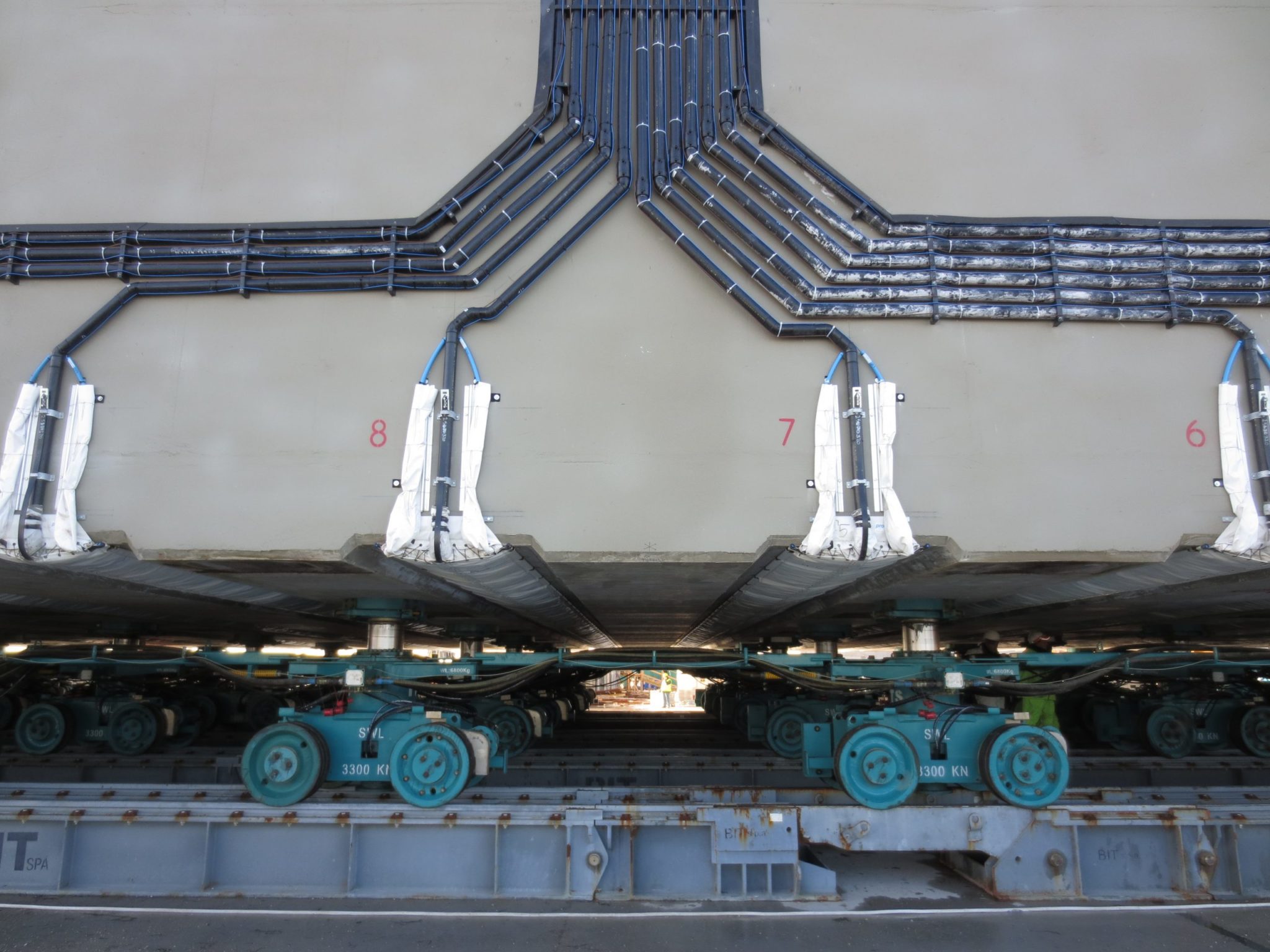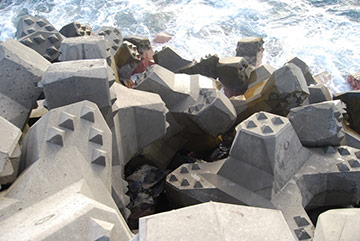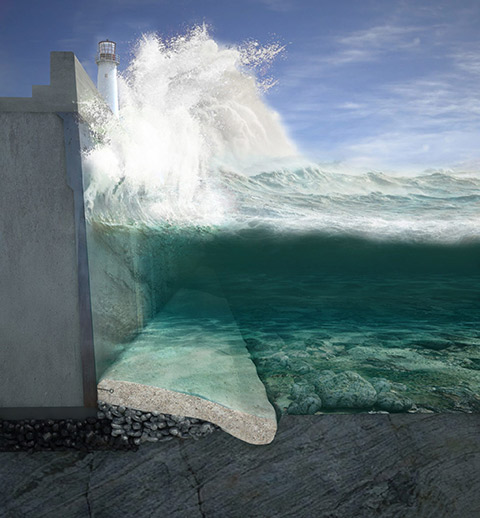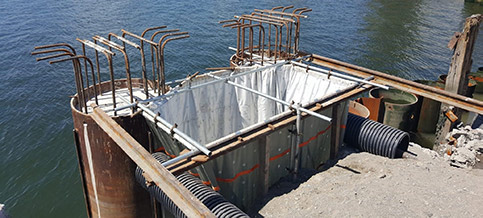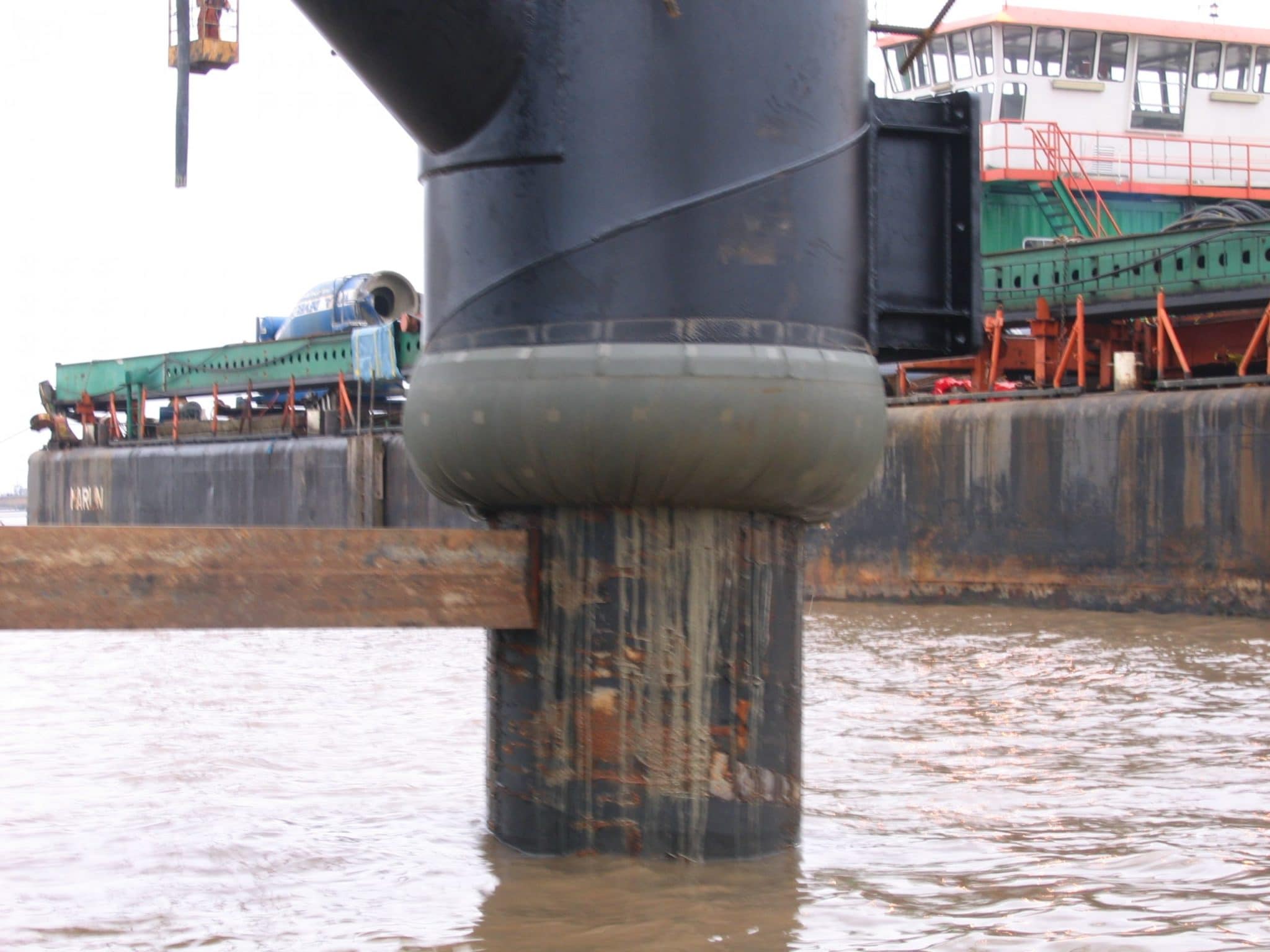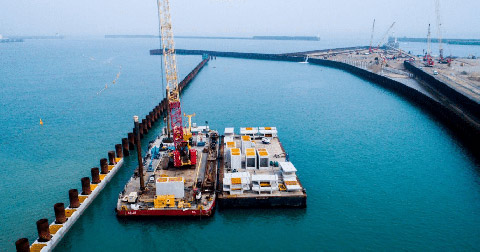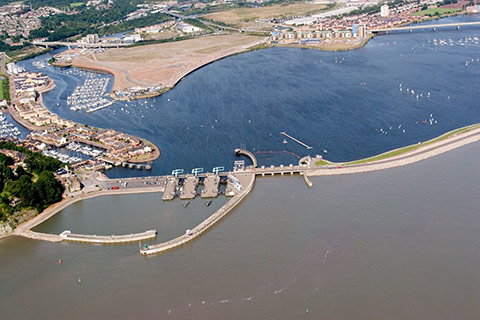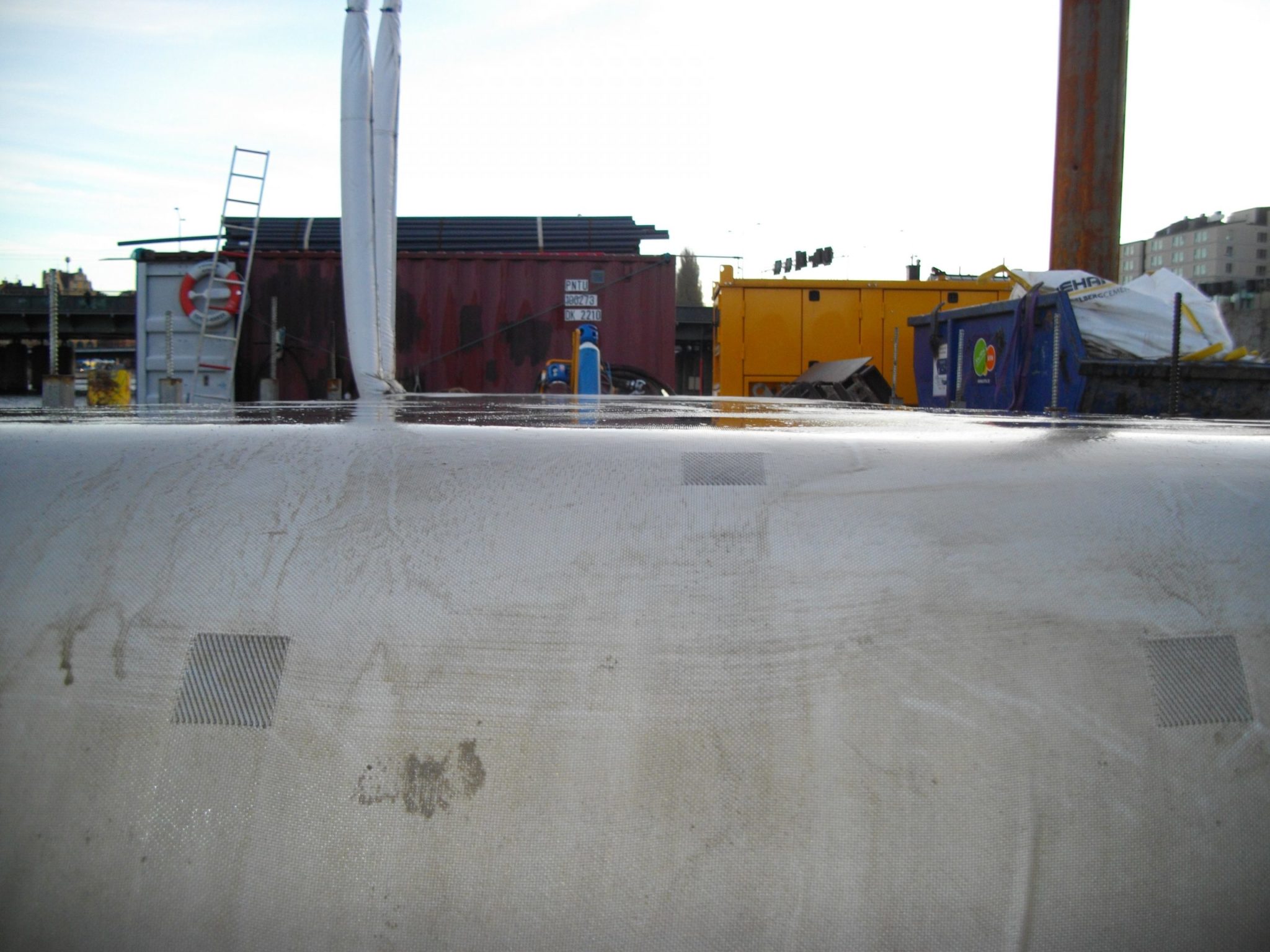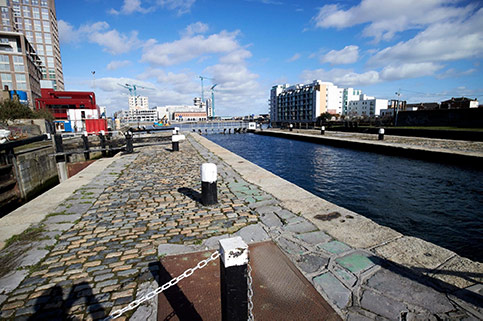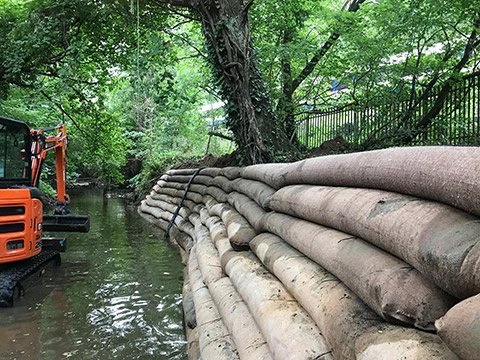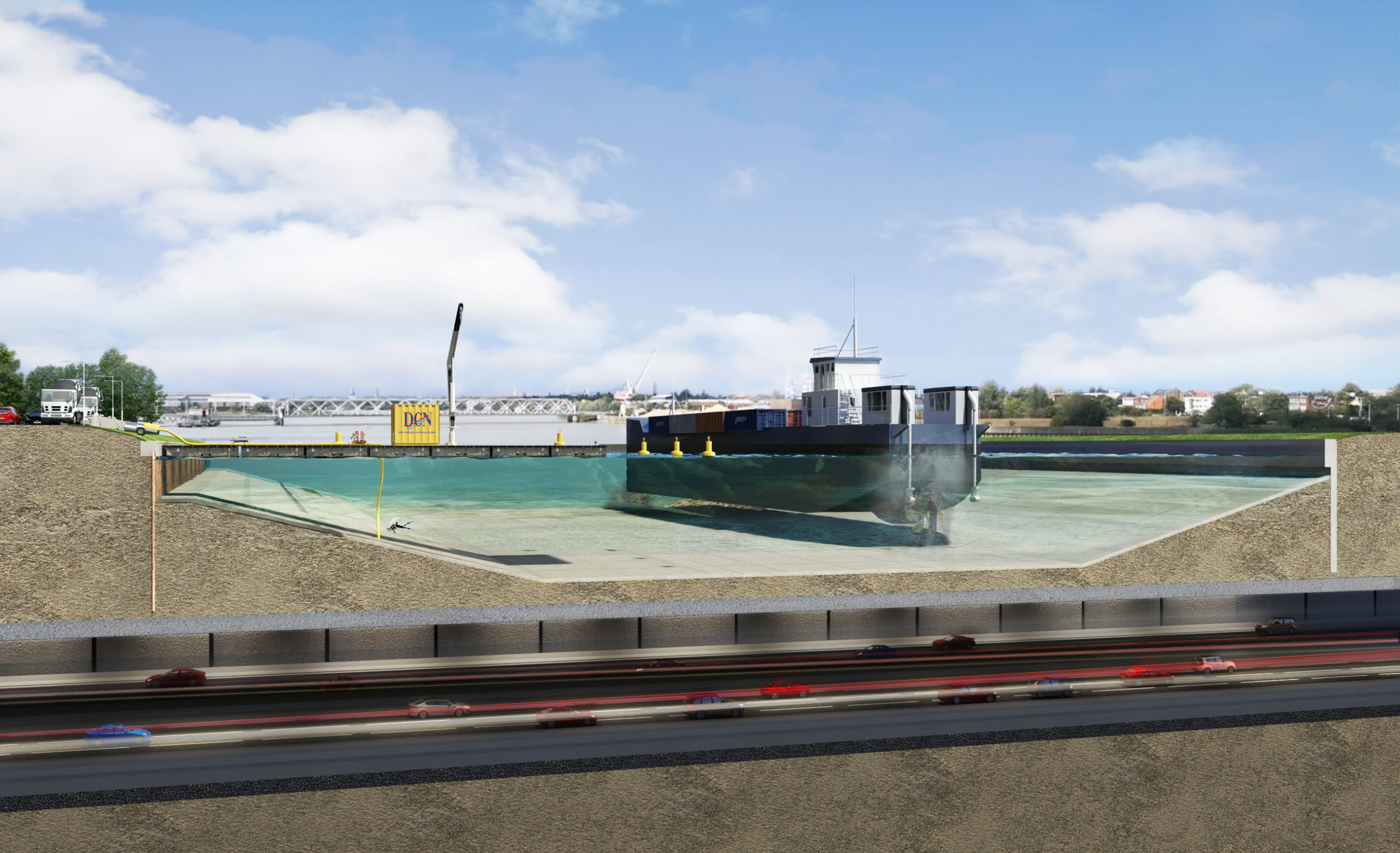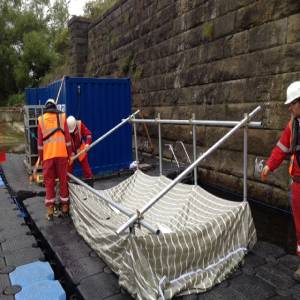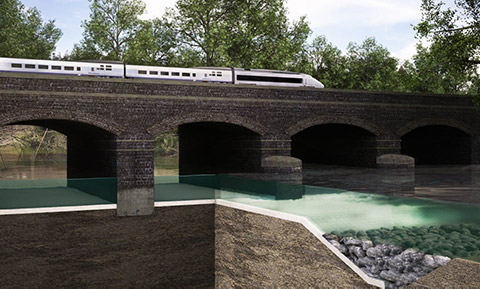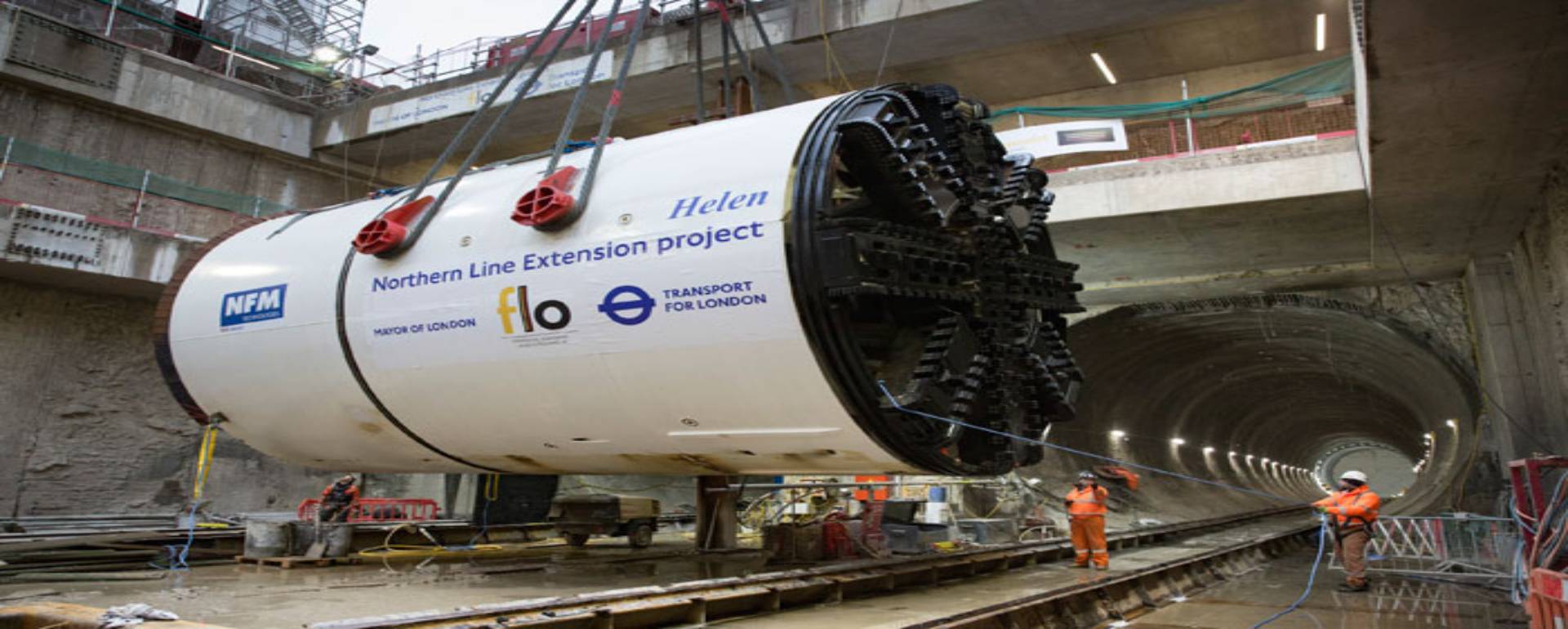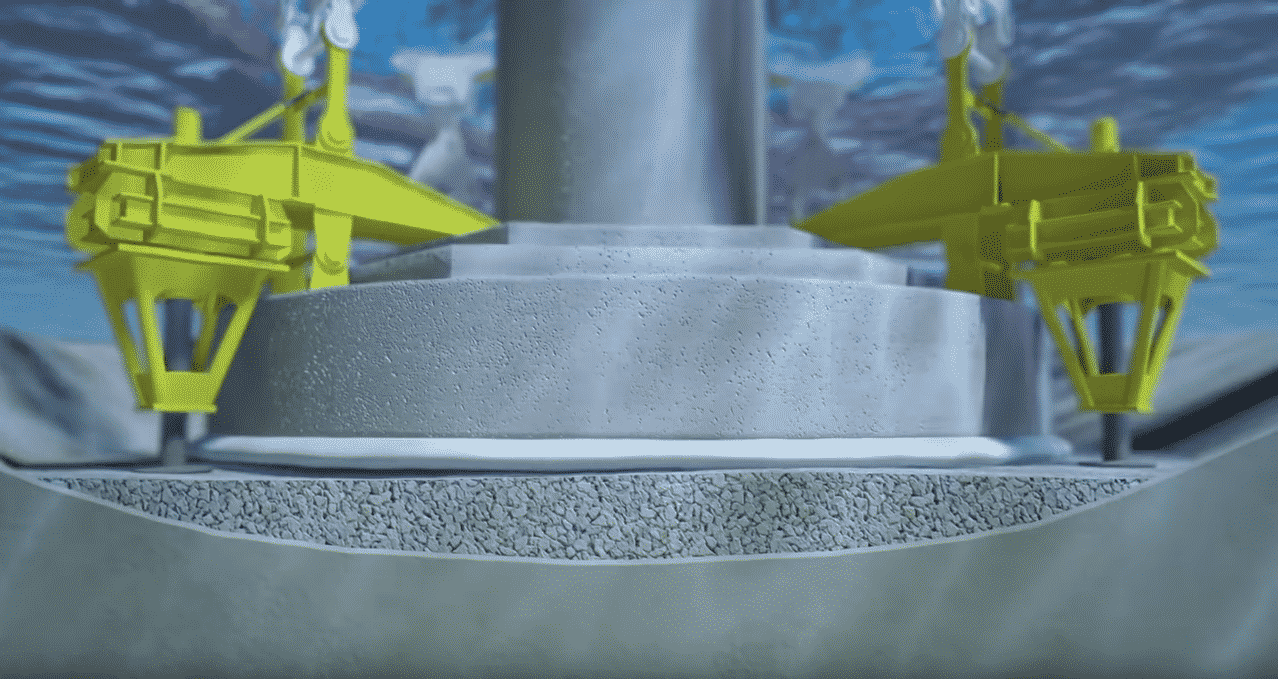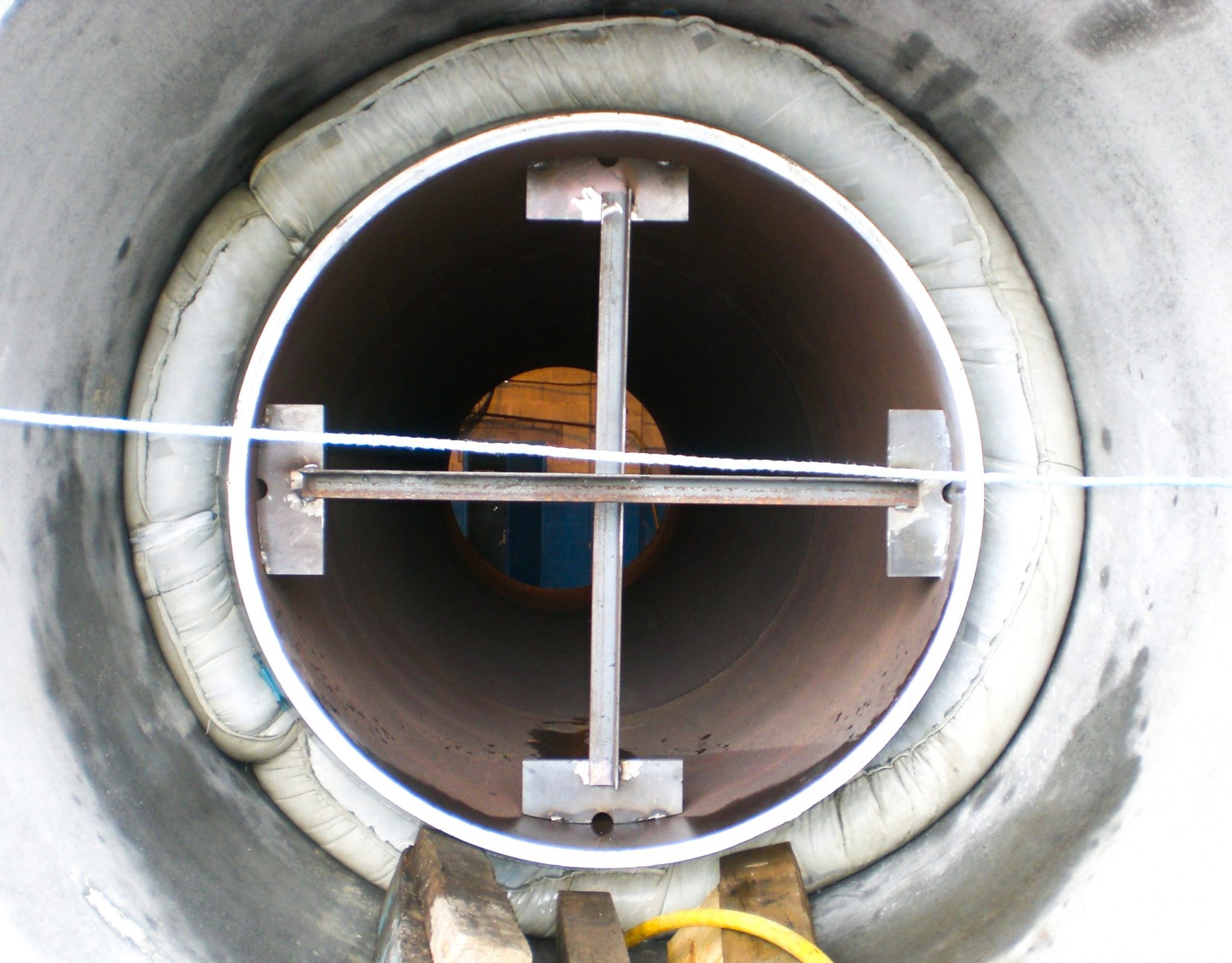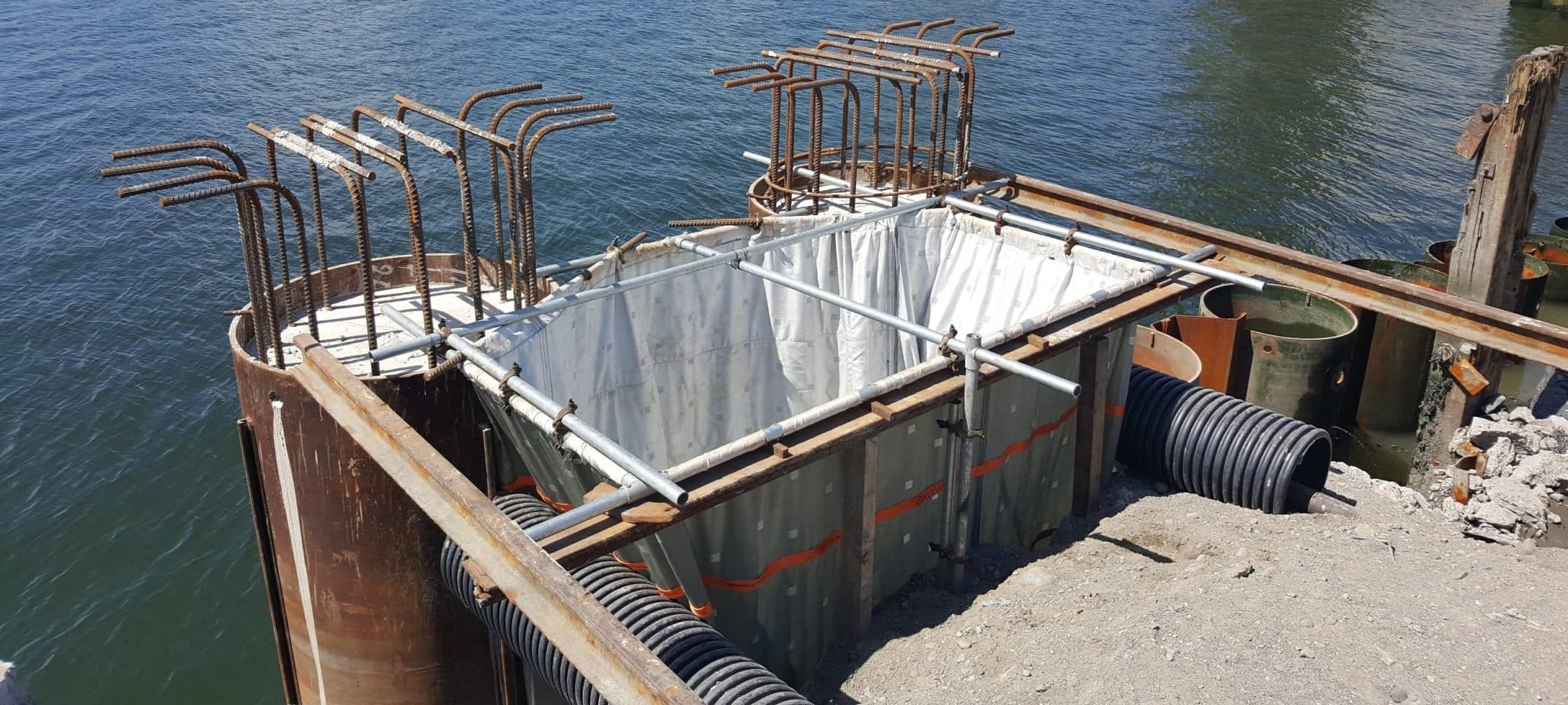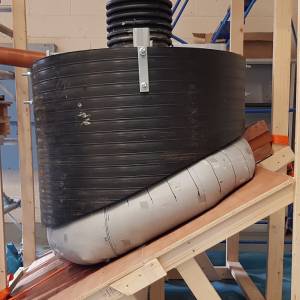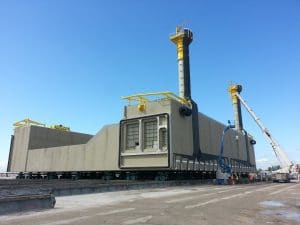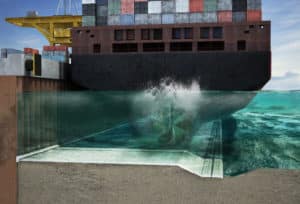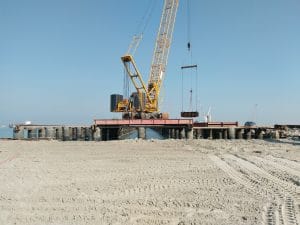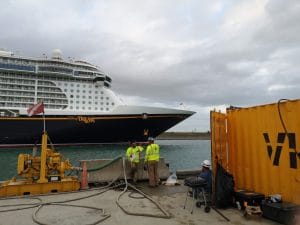Caissons
Caissons are commonly used in marine construction to reduce the amount of work undertaken in water. Seals, joints, or bearings are commonly required between these precast elements to retain fill material, provide load transfer from one piece to another (through shear or compression), and to limit relative movement or to provide a water seal.
Grouted Seals
There are 2 main types of seals and joints, those that are condensed and installed before the caisson is placed (Remote Seals), and those that are uncondensed and installed afterwards (Sock Seals). In both cases they can be installed into recesses for protection, position control, additional shear capacity and ease of installation.
Remote Grout Seals
Condensed seals and joints are fixed in place with filling hoses ahead of later construction stages that would make them inaccessible before filling.
When ready for filling the seals and joints are pumped filled in accordance with the filling plan which is designed to ensure full grout seal development with minimal risk of rupture. When they are unable to be monitored during filling, volume pumped is carefully controlled and grout sensors can be used to confirm filling progress and filling completion.
Sock Grout Seals
Seals and joints that are installed afterwards are usually lowered or pushed into position, either by hand, on a steel frame or using gravity with a weight. They are then appropriately restrained before filling.
Both types of seals are filled according to a carefully structured filling plan to ensure that the seal develops fully while controlling the risk of rupture.
Advantages
- Can perform multiple functions once filled such as retain fill material, provide load transfer from one piece to another (through shear or compression), to limit relative movement or to provide a water seal
- Can be condensed and left in place while other construction stages are carried out before filling
- Can be designed to suit wide construction tolerances
- Can be filled without access to the seal or joint location

